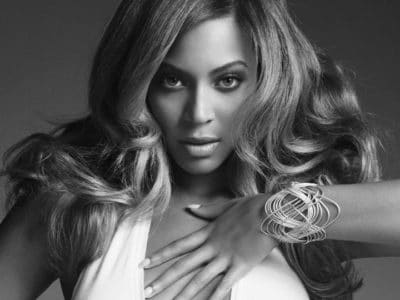Today, we will share some of the best romantic classical music pieces of all time. In addition, we will talk about romantic composers and their music styles and inspirations. Before we jump to the list, let’s get an overview of the idea of romanticism in classical music.
Music has a profound history starting from the very beginning of human civilization. But, the development of modern music theory is based on four key periods. They are-
- The Baroque era (c. 1600–1750)
- The Classical era (1750–1830)
- The Romantic era (c. 1830–1900)
- 20th Century and beyond (1900s onwards)
Despite its name, romance is not the only key element of music in the romantic period. During that period, composers focused on writing powerful melody-driven emotive and intense music.
In short, musical Romanticism is often distinguished by focusing on:
- originality & individuality
- personal & emotional expression
- choice of freedom & experimentation.
However, the romantic spirit can get inspiration from the beauty of nature, poetry & literature, or even from legends & folk tales.
Love is something that we can perceive from happy memories throughout our lifetime. For example, imagine yourself alone in a place where a beautiful river flows in the middle of green mountains. The awe of nature might have an impact on you. On the other hand, you can feel how much you love to spend time with your friends, family, or with your pet animal.
Perhaps, these moments can inspire composers to create romantic music.
During the romantic period, Europe’s industrial revolution was running in full thrust. As a result, In reaction to that, the romantic movement was popularized among the artists.
Let’s dive into our list of the best romantic classical music. Although the list mainly reflects the romantic classical music from the romantic period, some compositions from other timelines are listed too.
Table of Contents
Our List Of Best Romantic Classical Music
Symphony No. 5 – Ludwig van Beethoven
Ludwig van Beethoven is undoubtedly one of the most admired composers in western classical music. Moreover, his works are the most frequently performed in the classical music canon, spanning the transition from the Classical to the Romantic periods.
Beethoven’s Symphony No. 5 was first premiered on 22nd December 1808 at the Theater an der Wien in Vienna. A couple of years later, German music critic & analyst E.T.A Hoffmann established the idea of musical romanticism in a lengthy review of this composition. Later in 1813, Hoffmann published another article analyzing the instrumental music of Beethoven.
In the first parts of the article, Hoffmann traced the beginnings of musical Romanticism to Haydn and Mozart’s compositions. Hoffmann’s ideas of music previously linked with the name “Romantic,” employed in opposition to the constraint and formality of Classical models, elevated music, and particularly instrumental music. Later, his ideas of music drove to a position of preeminence in Romanticism as, “the art best adapted to the expression of emotions.”
Orchestral Suite No. 3 “Air on the G String” – Johann Sebastian Bach
Johann Sebastian Bach was a late Baroque composer and musician from Germany. Bach’s music was harmonically more innovative than his contemporaries. His compositions often employ surprisingly dissonant chords and progressions with extensive exploration of harmonic possibilities within a single piece.
However, almost a century and a half after Bach’s death, violinist August Wilhelmj gave the nickname of this romantic classical music piece.
Wilhelmj arranged the piece for solo violin and strings (or keyboard). While transposing it to C major, he noted the solo part on the G-string. The name stuck, and it is undeniably one of Bach’s most passionately expressive tour de force. Since its release, a plethora of instruments and ensembles has arranged this composition.
Certainly, Bach’s first recorded piece was Air on the G string. Back in 1902, cellist Aleksandr Verzhbilovich recorded the piece.
Vocalise – Sergei Rachmaninoff
Rachmaninoff is widely regarded as one of the greatest pianists of his generation, as well as one of the last great representatives of the idea of romanticism in Russian classical music.
Vocalise was published in 1915 as the last of his 14 Songs or 14 Romances, Op. 34. The song was dedicated to an outstanding opera singer Antonina Nezhdanova. It is far more frequently performed in various instrumental arrangements than its original vocal version.
Nocturnes, Op. 9: No. 2 in E Flat Major. Andante – Frédéric Chopin
Frederic Chopin was a pianist and composer of unrivaled genius in the field of keyboard music. However, his influence on other musicians was entirely out of proportion to the number of concerts he gave (only 30 public performances in 30 years of concertizing).
No one before or since has added as many significant works to the piano’s repertoire or come close to capturing its soul.
Chopin banished the ordinary from his music with his remarkably advanced treatment of harmony and rhythm. In summary, his compositions opened the door to an emotional ambiguity that continues to intrigue listeners.
However, the Nocturnes, Op 9 are a set of three Nocturnes and these are Chopin’s first published set of nocturnes. All of these pieces were dedicated to Madame Marie Pleyel who was a Belgian concert pianist. From this set, the second nocturn is considered Chopin’s most famous piece. Though, he composed that piece at the age of around 20.
Nocturne No. 20 In C Sharp Minor – Frédéric Chopin
Fredric Chopin dedicated this piece to his older sister Ludwika Chopin, writing ”To my sister Ludwika as an exercise before beginning the study of my second Concerto.”
But, the piece was first published 21 years after the death of the composer. It has a soft introduction and a dramatic melody played over a quaver bassline. In other words, this movement is familiar to lento con gran espressione.
Holocaust survivor Natalia Karp performed the piece for a Nazi concentration camp commandant. Later, the commandant was so impressed with her performance that he spared her life.
This was also the piece played by Holocaust survivor Polish pianist Wladyslaw Szpilman during the last live broadcast of Polish radio on September 23, 1939, when Warsaw was under German siege.
Years later, upon their first meeting, Szpilman played this piece for German army officer Wilm Hosenfeld. Though in the corresponding film scene (2002 Roman Polanski film “ The Pianist”), Szpilman plays an abridged version of Chopin’s Ballade No. 1 in G minor, Op. 23. Hosenfeld later assisted Szpilman in hiding and provided him with food in the final months of the war.
Hungarian Dance No. 5 – Johannes Brahms
Johannes Brahms was a German composer, pianist, and conductor of the mid-romantic period. He is often grouped with Bach & Beethoven as one of the “Three Bs” in classical music. However, the term was established by nineteenth-century conductor Hans von Bulow.
Johannes Brahms collaborated with some of the greatest musicians of the time, including pianist Clara Schumann and violinist Joseph Joachim (the three were close friends). Certainly, many of his pieces have become standard fare in modern concert halls.
Brahms’ Hungarian Dances are a collection of 21 lively dance melodies based on Hungarian themes. Above all, these music pieces influenced the creation of ragtime. To clarify, It was a style that peaked in popularity between 1895 and 1919.
Canon In D – Johan Pachelbel
German composer, organist, and teacher Johann Pachelbel helped to establish the South German organ schools. During his lifetime, his music was enormously popular. As a result, he had many students, and his music became a model for composers in southern and central Germany.
Pachelbel’s Canon In D is a piece of romantic classical music that is intimately associated with love and marriage. It’s unclear how this 17th-century piece ended up being so common in 21st-century wedding ceremonies. Though, this canon is not a bridal march in the traditional sense.
With the cello’s regular pulse, radiant harmonies, and soaring melodies, it’s easy to see why brides all over the world choose this special piece to accompany their walk down the aisle.
Serenade – Franz Schubert
Franz Peter Schubert was an Austrian composer who worked during the late Classical and early Romantic periods. Ständchen, D 889 is a piece of romantic classical music, popular as Serenade in English. However, It is a setting of Shakespeare’s Cymbeline’s “Song” from Act 2, Scene 3.
In Heinrich Kreissle von Hellborn’s Life of Franz Schubert, a childhood friend of Schubert told Heinrich Kreissle von Hellborn a story about the song’s composition.
One Sunday, during the summer of 1826, Schubert, with several friends was returning from Pötzleinsdorf to the city, and, on strolling along through Währing, he saw his friend Tieze sitting at a table in the garden of the “Zum Biersack”. The whole party determined on a halt in their journey. Tieze had a book lying open before him, and Schubert soon began to turn over the leaves. Suddenly he stopped, and pointing to a poem, exclaimed, “Such a delicious melody has just come into my head, if I but had a sheet of music-paper with me.” Herr Doppler drew a few music lines on the back of a bill-of-fare, and in the midst of a genuine Sunday hubbub, with fiddlers, skittle players, and waiters running about in different directions with orders, Schubert wrote that lovely song.
Consolation no. 3 – Franz Liszt
Hungarian composer Franz Liszt was a virtuoso pianist, conductor, music teacher, arranger, and organist of the romantic period. In addition, he was a friend, musical promoter, and benefactor to many of his contemporaries. Some of the renowned names are Frédéric Chopin, Charles-Valentin Alkan, Richard Wagner, Hector Berlioz, Robert Schumann, Clara Schumann, Edvard Grieg, Joachim Raff, Mikhail Glinka, and Alexander Borodin.
Franz Liszt’s Consolations (German: Tröstungen) are a collection of six solo piano compositions. However, Consolation No.3 is the most popular one of all the Consolations. Its style is reminiscent of Chopin’s Nocturnes, and in particular, seems to have been influenced by Chopin’s Nocturne Op. 27 No. 2.
But, the resemblance between the two pieces has been interpreted as a tribute to Chopin. Chopin died in 1849, a year before the Consolations were released.
Ride Of The Valkyries – Richard Wagner
German composer, theatre director, polemicist & conductor Richard Wagner is famous for his operas. Later, His operas are defined as “music dramas”. Complex textures, rich harmonies and orchestration, and the sophisticated use of leitmotifs are some special characters of his compositions. At the same time, musical phrases connected with certain individuals, places, ideas, or story elements are significant features of his pieces.
The popular term for the music at the start of Act 3 of Richard Wagner’s opera Die Walküre is known as “Ride of the Valkyries.”
Reverie – Claude Debussy
French composer Claude Debussy is considered the first impressionist composer. Although he personally doesn’t like this title. During his early life, he was influenced by Russian and far Eastern music. After exploring different ideas, Debussy established his own style of harmony and orchestral coloring. But, during his lifetime, most of his musical establishment ideas didn’t receive the best attention.
Béla Bartók, Olivier Messiaen, George Benjamin, and jazz pianist and composer Bill Evans are just a few of the composers who have been deeply influenced by Debussy’s work.
Debussy composed Reverie in 1890. It was one of his earliest solo piano works that gained popularity. For instance, the slowly repeating theme that opens the piece (as the title suggests) feels like a slide into a peaceful dream world. In the later part of the composition, the textures become richer and the dream becomes ever more luxuriant and irresistible.
Grande Overture Op. 61- Mauro Guiliani
Mauro Guiliani was a leading guitar virtuoso of the early period of romantic classical music. His first learning instrument was a cello. After that, he studied to play the violin before devoting himself to the guitar.
As a guitarist, he was a big fan of the theme and variations. It was a very popular form of music in Vienna. He had a remarkable ability to weave a melody into a musical passage while remaining true to the instrument’s turn of phrase.
Grand Overture is an Italian-style piece that perfectly exemplifies the dramatic late-eighteenth-century sonata form for solo guitar. French Overture, Mannheim crescendo, Galant melodies, ombra style, aria, hunting style, Alberti bass, and Sturm und Drang are a few of the topics and gestures that we find throughout Mozart and Haydn’s classical sonatas. However, no other composition by Giuliani achieves such a masterful balance of form and virtuosity.
Gran Vals – Francisco Tárrega
Spanish composer and classical guitarist of the romantic period, Francisco Tarrega is called “the father of classical guitar”. Tárrega’s music compositions followed the romantic style of European masters of the nineteenth century. Therefore, his works reflect his conservatory training and his familiarity with contemporary classical genres and techniques are evident.
In 1992, Finnish telecommunication company Nokia used Francisco Tárrega’s Gran Vals as background music in a commercial for the Nokia 1011. Later, the Nokia tune ringtone used the Gran Vals excerpt phrase.
As a result, it is claimed to be “probably the world’s most heard tune.” The excerpt is taken from this romantic classical music piece’s measures (bars) 13–16.
Fur elise – Ludwig van Beethoven
Bagatelle No. 25 in A minor for solo piano, familiar as Für Elise (German: [fy eliz], transl. For Elise), is one of Ludwig van Beethoven’s most popular works. Though, the score of the piece was first discovered by Ludwig Nohl, 40 years after the death of Beethoven.
Ludwig Nohl confirmed that the original autograph manuscript (which is now lost) of the piece had the title: “Für Elise am 27 April [1810] zur Erinnerung von L. v. Bthvn”. The title’s translation is “For Elise on April 27 in memory by L. v. Bthvn”.
As of today, the true identity of Elise remains a mystery. Although, researchers have suggested three possible names for the identity of Elise. The names are Therese Malfatti, Elisabeth Röckel, or Elise Barensfeld. Above all, evidence suggests that “Elise” was a close friend of Beethoven’s and most likely a significant figure in his life.
Mariage d’Amour – Paul de Senneville
There is an interesting story behind this romantic classical music piece. The piece was uploaded to a YouTube channel called Toms Mucenieks on 1st March 2017. However, the author of the channel uploaded the piece with the wrong title (Chopin – Spring Waltz (Mariage d’Amour).
As a result, while I am writing this article it has reached nearly 136 million views. This points out the fact of how precious the works of Chopin and his contemporary artists were back then.
Later, the author of the channel mentioned the original composer Paul de Senneville in a disclaimer sharing the true story behind this piece. The truth is, French composer Senneville published this solo piano music in 1979. Richard Clayderman first performed this piece for his album Lettre À Ma Mère.
Final Thoughts
After making this list of best romantic classical music I certainly feel there are a handful of compositions that could easily fit in this list. Perhaps, we can discuss this in another article about romantic classical music. In the meantime check out our list of best classical guitarists performing in today’s world.
Also, let us know about your favorite romantic classical music in the comment section that you don’t see in this article.
Check also:
- Our 15 Best Coldplay Songs Of All Time [2022]
- Our Top 10 Love Hate Songs Of All Time [Updated 2022]
- 50+ Most Underrated Songs From 10 Different Genres















![The Top 12 Best One Piece Arcs [Ranked]](https://calibbr.com/wp-content/uploads/2022/06/The-Top-12-Best-One-Piece-Arcs-Ranked-180x180.jpeg)
“Wow! This list of the top 15 romantic classical music pieces is simply enchanting! Each selection evokes such a powerful and emotional response, transporting me to another world with their beautiful melodies and stunning orchestration. I love how this compilation showcases the timeless beauty and passion of classical music, making it perfect for setting a romantic ambiance. Thank you for curating this remarkable collection that truly touches the heart and soul. Elmer Harvey”